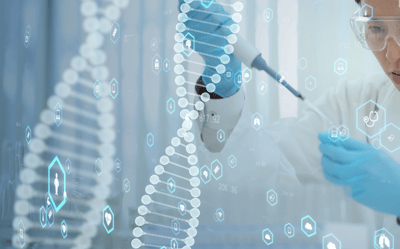Drug development for new therapies begins with research and discovery. To treat PWS (Prader-Willi syndrome) and SYS (Schaaf-Yang syndrome), we need to understand the differences between individuals with these conditions and typical individuals, right down to the cellular level. Once we have identified what is not functioning properly at the cellular level, we can explore treatments to address these differences.

Starting this June and continuing for the next three years, FPWR is sponsoring a postdoctoral researcher at Heidelberg University Hospital to investigate the MAGEL2 gene and develop resources that will boost global PWS/SYS research efforts. This postdoc will be mentored by Dr. Christian Schaaf, the physician-scientist who first described SYS and who has been leading scientific study in this disorder for the past decade.
The MAGEL2 gene, located in the Prader-Willi region of chromosome 15, is associated with both PWS and SYS. SYS is caused by mutations in the MAGEL2 gene expressed from the paternal chromosome 15, while PWS typically involves loss of the gene on the paternal chromosome 15. The MAGEL2 gene is responsible for building the MAGEL2 protein. Previous studies have shown that the MAGEL2 protein is important for ‘trafficking’ and recycling proteins in the cell, but there are still questions about its normal function and how disruption of those functions lead to the symptoms that are seen in SYS and PWS.
The FPWR-funded Postdoctoral fellow will spend the next three years leveraging what we have learned about MAGEL2 to build resources and answer some remaining critical questions.
Is a Truncated (partial) MAGEL2 Protein Present in People with SYS, and if so, is it causing problems in their cells?
The MAGEL2 gene provides instructions for making the MAGEL2 protein. We suspect mutations in SYS are leading to the production of a truncated (partial) protein, which may be causing harm in the cell. To date, scientists have not been able to observe this truncated protein in human cells or tissues. This could be due to a lack of reliable tools, such as antibodies, to detect the protein accurately. It is also possible that the cells' natural quality control systems eliminate the altered MAGEL2 protein. It’s important to understand if the mutated protein is present and causing harm in the cell, because it will impact which therapeutic strategies make the most sense.
Recently, researchers genetically engineered rats with a similar truncating mutation in the Magel2 gene. Using a new cutting-edge approach, the researchers were able to detect the partial protein in the rats' brains. This was the first time truncated Magel2 was observed in an animal specimen. Similar methods may be needed to finally confirm if a truncated protein is present in individuals with SYS.
The FPWR-funded postdoctoral researcher will explore this possibility while also leading efforts to generate better antibodies for detecting both normal and truncated versions of the protein. This will expand the options available to researchers studying both SYS and PWS to detect MAGEL2 and understand what it is doing in the cell. If truncated MAGEL2 is indeed present in SYS cells as predicted our postdoc will be equipped with new tools to determine if its presence is disrupting the normal functioning of the cell, and how this may contribute to the symptoms we see in SYS.
Can Genetic Therapy Activate the Maternal Copy of Magel2?
Each cell contains two copies of most genes, one inherited from each parent. Due to a phenomenon called imprinting, the maternal copy of MAGEL2 in the PWS region on chromosome 15 is not accessible to the enzymes that normally read and transcribe genes. This makes mutations on the paternal copy more disruptive.
Every person with SYS and PWS has an intact copy of the MAGEL2 gene that is sitting on the maternal copy of chromosome 15. What if there was a way to allow cells to utilize the intact maternal copy?
Studies have shown that about 50% of mice lacking a paternal copy of Magel2 still produce a very low level of Magel2 protein, which we refer to as ‘leaky expression”, from the maternal copy. Can we increase this leaky expression? To achieve this, we need a better understanding of how the gene is silenced through chemical attachments that hinder access to the DNA, known as its epigenetics.
The FPWR-funded postdoctoral researcher will work to understand the epigenetics of MAGEL2 and evaluate the feasibility of epigenetic interventions. Additionally, the researcher will evaluate a new therapeutic strategy called "readthrough therapy," where cells can be tricked into bypassing mutations and reading the correct sequence from a disrupted gene, resulting in the production of a full-length and fully functional MAGEL2 protein.
The MAGEL2 gene plays an important role in the human genome and is a critical gene for study as we search for treatments for PWS and SYS. Dedicating a postdoctoral researcher to investigate this important gene will create essential knowledge and resources so we may advance treatments for PWS and SYS, in which this gene is missing or not working properly.








